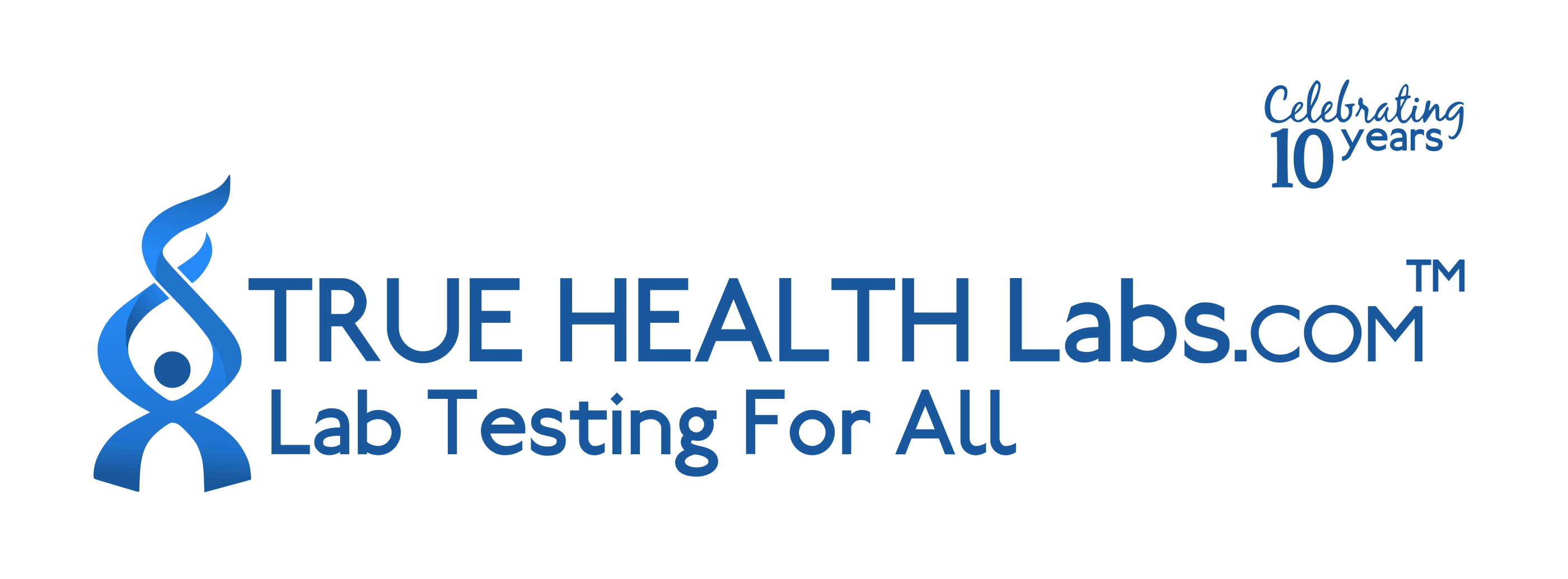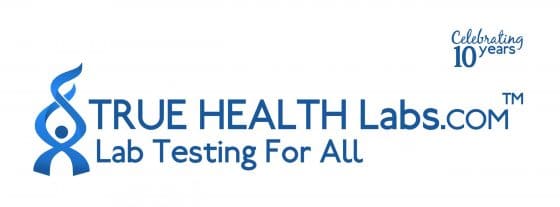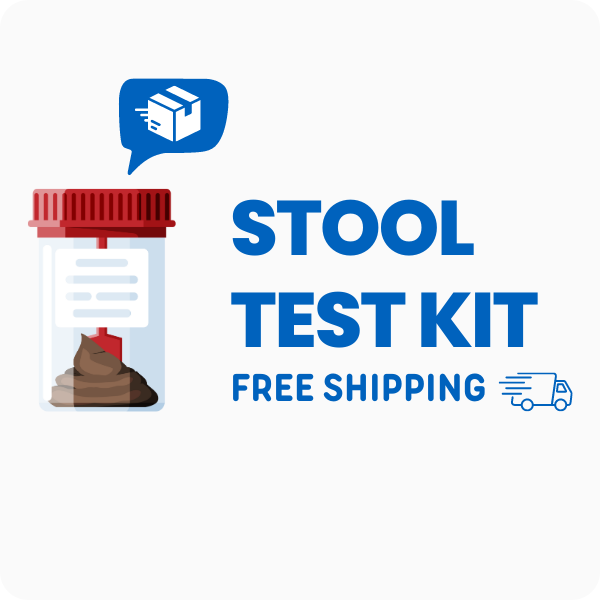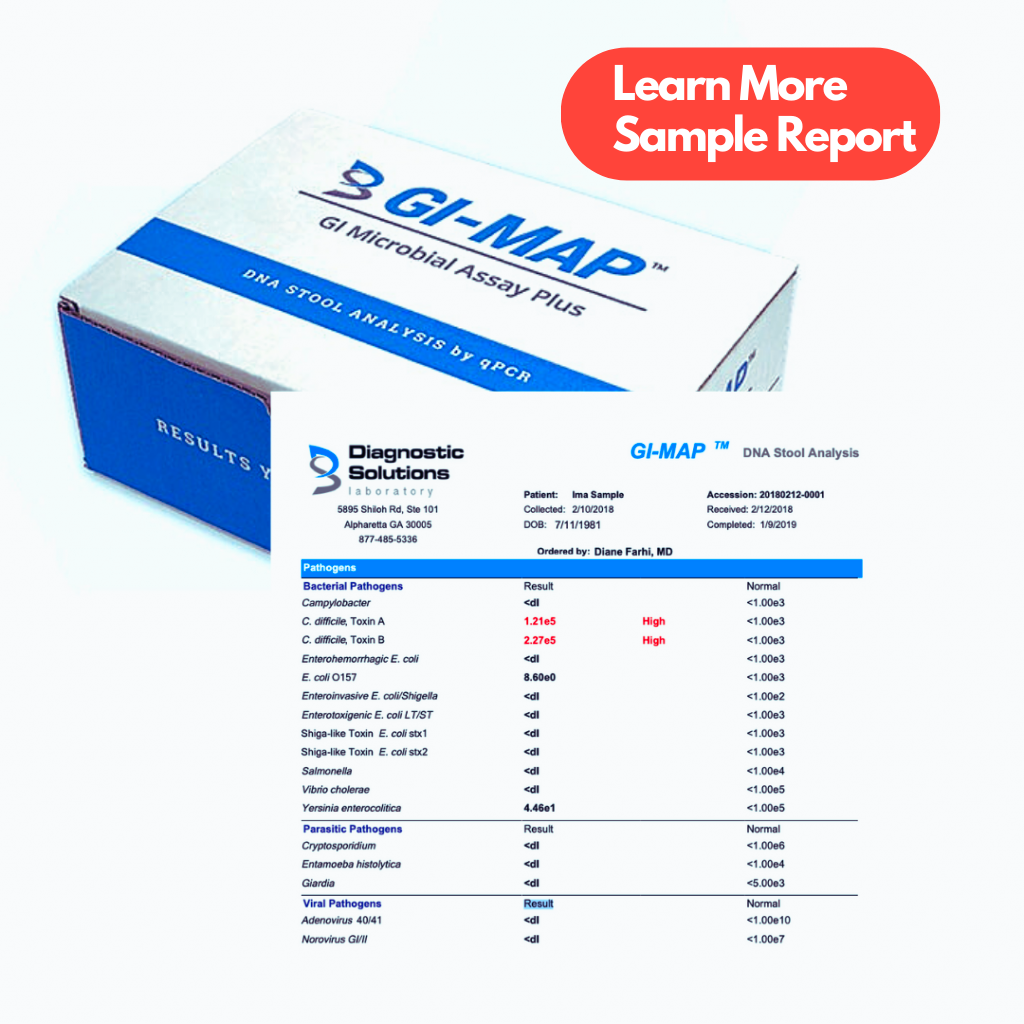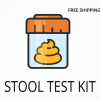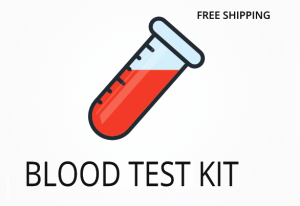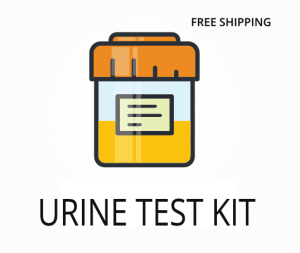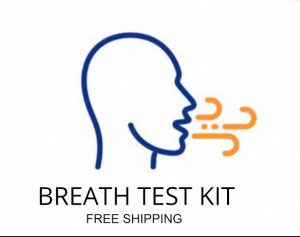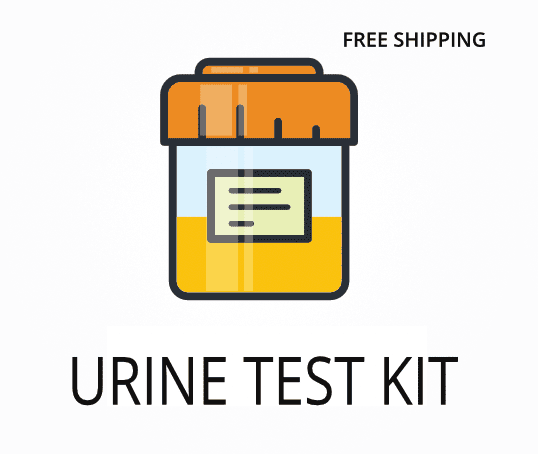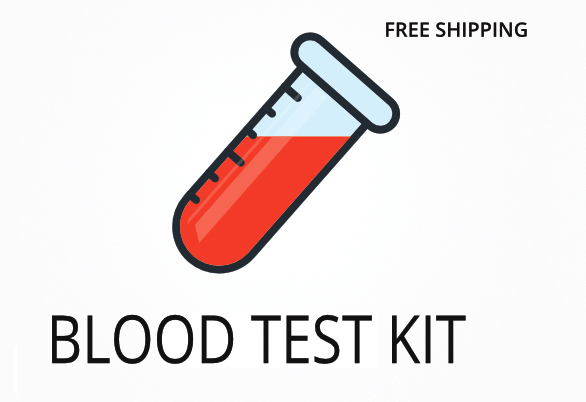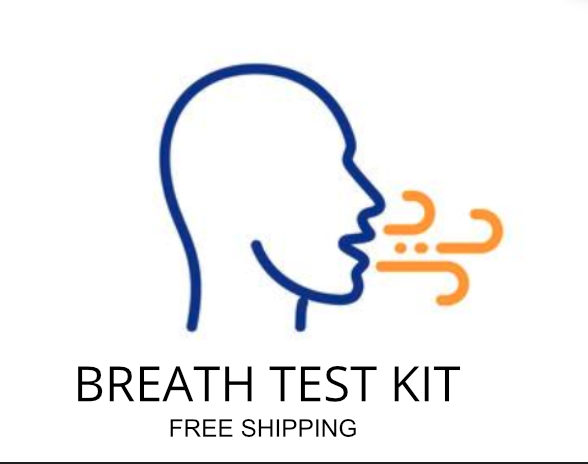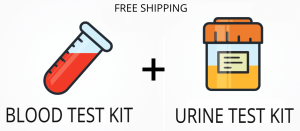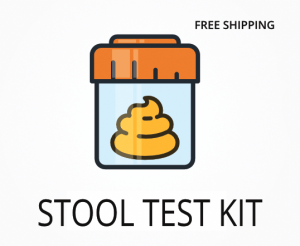GI-MAP Stool Test | Diagnostic Solutions

The GI-MAP home stool test, developed by Diagnostic Solutions Laboratory, utilizes cutting-edge DNA technology to pinpoint the condition of your gut microbiome with remarkable precision. This advanced approach bypasses the limitations of traditional stool tests, which often miss crucial data due to bacteria dying off before they can be tested. If you have watched the documentary “Hack Your Health: The Secrets of Your Gut,” this is your microbiome test.
It’s not just about the beneficial gut flora, the GI-MAP stool test goes further to identify and analyze harmful bacteria, viruses, parasites, and fungi, which can disrupt the delicate balance of your gut’s good microbiome.
Not only does the GI-Map reveal harmful bacteria, but (as an addon) it also tests for their genetic makeup to understand their resistance to antibiotics (see the bottom table). This critical information empowers you and your healthcare provider to have more treatment options, ensuring that any interventions are as effective as possible in supporting your gut health.
We also have a one-on-one GI Map results review service so that you understand your test results and can have a more productive conversation with your treating healthcare practitioner.
What’s In Your GI-Map Stool:
| Microbiome Flora | Benefit to Your Body |
|---|---|
| Bacteroides fragilis | This microorganism plays a key role in developing a robust immune system and preventing harmful inflammation in the digestive tract. |
| Bifidobacterium | Important for breaking down food, fighting harmful bacteria, and producing essential vitamins (B1, B2, B3, B6, B9 (folic acid), B12, vitamin K) that support overall health. |
| Enterococcus | These bacteria contribute to a healthy gut environment and assist in the digestion process, converting food into energy. |
| Escherichia (E. Coli) | Certain strains of E. Coli can be harmful and some strains are beneficial for maintaining the integrity of the intestinal barrier and preventing infections. |
| Lactobacillus | These bacteria are vital in maintaining a healthy balance of gut flora, warding off pathogens, and aiding in digestion. |
| Akkermansia mucinophila | This strain helps to reinforce the mucous layer in the gut, which acts as a protective barrier and plays a role in metabolic processes. |
| Clostridia | Members of the Clostridia class are involved in the synthesis of important nutrients and the maintenance of a healthy and balanced gut microbiota. |
| Faecalibacterium prausnitzii | This bacterium has anti-inflammatory properties that are crucial for the health of the gut lining and preventing disorders like IBS. |
| Roseburia | Roseburia bacteria are known to produce butyrate, a short-chain fatty acid that fuels colon cells and supports a healthy colon. |
| Bacterial Pathogens | |
|---|---|
| Campylobacter | Causes foodborne illness with symptoms like fever, diarrhea, and abdominal pain, often from undercooked poultry. |
| Clostridium difficile, Toxin A | Releases toxins that damage the intestines, leading to severe diarrhea and colitis, often after antibiotic use. |
| Clostridium difficile, Toxin B | Similar to Toxin A, this also causes severe intestinal conditions and is associated with hospital-acquired infections. |
| E. coli | Some strains like O157:H7 can cause severe stomach cramps, bloody diarrhea, and vomiting. |
| Enterotoxigenic E. coli LT | Produces a heat-labile toxin causing watery diarrhea, especially in children in developing countries. |
| Enterotoxigenic E. coli ST | This one produces a heat-stable toxin and is a common cause of traveler’s diarrhea. |
| Shiga-like Toxin E. Coli stx1 | Produces a toxin causing hemorrhagic colitis and can lead to a severe condition known as hemolytic uremic syndrome. |
| Shiga-like Toxin E. Coli stx2 | Similar to stx1, but often associated with more severe outcomes and complications. |
| Shigella | Leads to shigellosis, causing symptoms like fever, stomach pain, and diarrhea, which can be bloody. |
| Salmonella | Causes salmonellosis, with symptoms like diarrhea, fever, and abdominal cramps, often from contaminated food. |
| Vibrio cholera | Responsible for cholera, which causes severe watery diarrhea and can lead to dehydration and death if untreated. |
| Yersinia enterocolitica | Often leads to yersiniosis, causing symptoms like diarrhea, fever, and abdominal pain, sometimes leading to severe complications. |
| Viral Pathogens | |
| Adenovirus 40/41 | Commonly causes diarrhea in children and can also lead to respiratory infections. |
| Norovirus GI | A leading cause of gastroenteritis, with symptoms including diarrhea, vomiting, nausea, and stomach pain. |
| Norovirus GII | Similar to GI but is the most common cause of norovirus outbreaks worldwide. |
| Rotavirus A | Highly contagious virus causing severe diarrhea, vomiting, fever, and abdominal pain, primarily in infants and young children. |
| Parasitic Pathogens | |
| Cryptosporidium | Causes cryptosporidiosis, leading to watery diarrhea, which can be particularly severe in immunocompromised individuals. |
| E. histolytica | Responsible for amoebiasis, which can lead to dysentery with bloody diarrhea, and liver abscess if it spreads. |
| Giardia | Causes giardiasis, characterized by symptoms such as foul-smelling diarrhea, stomach cramps, and nausea. |
| Helicobacter pylori | |
| H. Pylori | Known for causing ulcers in the stomach lining and increasing the risk of stomach cancer. This pathogen is also linked to chronic gastritis and peptic ulcers. |
| Virulence Factor, cagA | A protein associated with H. pylori, which increases its ability to cause damage and leads to more severe gastric diseases. |
| Virulence Factor, vacA | This is a toxin produced by H. pylori that can lead to cell death in the stomach lining and contribute to ulcer formation. |
| Opportunistic Bacteria | Potential Impact on Health |
|---|---|
| Citrobacter freundii | Can cause infections in the urinary tract and other parts of the body, may trigger responses in autoimmune conditions. |
| Klebsiella pneumoniae | Known to cause pneumonia, it can also lead to other infections, particularly in individuals with weakened immune systems. |
| Proteus | A group of bacteria that can cause urinary tract infections and may be linked to rheumatoid arthritis. |
| Proteus mirabilis | This specific strain is also associated with urinary tract infections and could be implicated in kidney stone formation. |
| Methanobacteriaceae | A family of bacteria that produces methane, which can influence the overall balance of the gut microbiome. |
| Fusobacterium | These bacteria are associated with several infections, including periodontal disease, and may have links to colorectal cancer. |
| Desulfovibrio | They are known for producing hydrogen sulfide, which can damage the gut lining and is associated with inflammatory bowel diseases. |
| Overgrowth Bacteria | Effects on Health |
|---|---|
| Morganella | Typically found in the human intestine, but if it overgrows, it can cause infections, particularly in the urinary tract. |
| Pseudomonas | This group of bacteria is known for its resistance to antibiotics and can cause various infections if it overgrows. |
| Pseudomonas aeruginosa | A specific strain of Pseudomonas that can lead to respiratory system infections and is particularly problematic in hospitals. |
| Staphylococcus | A genus that includes many species, some of which can cause skin infections, pneumonia, and food poisoning when they overpopulate. |
| Streptococcus | This genus can cause a wide range of health issues, from strep throat to more serious conditions like rheumatic fever if it grows unchecked. |
| Other Parasites | Effects on Health |
|---|---|
| Blastocystis hominis | Commonly found in the intestine; can sometimes cause digestive symptoms, but many people have no symptoms at all. |
| Dientamoeba fragilis | May cause diarrhea and stomach pain, although it is often found in people who have no digestive symptoms. |
| Endolimax nana | Usually doesn’t cause problems but can be associated with gastrointestinal symptoms in large numbers. |
| Entamoeba coli | Not to be confused with E. coli bacteria, this parasite is typically harmless but can sometimes be a sign of poor sanitary conditions. |
| Chilomastix mesnelli | Often found in the human digestive tract and usually doesn’t cause disease or symptoms. |
| Pentatrichomonas hominis | Considered non-pathogenic, but its presence may indicate exposure to other pathogens or poor hygiene practices. |
| Fungi/Yeast | Effects on Health |
|---|---|
| Candida albicans | This yeast can cause infections like thrush and yeast infections, particularly in individuals with weakened immune systems. |
| Candida | Similar to Candida albicans, these species can lead to various candidiasis infections, affecting skin, genitals, throat, and more. |
| Geotrichum | Can cause a rare condition called geotrichosis, affecting the skin, bronchi, and lungs, mostly in immunocompromised individuals. |
| Microsporidium | These are microscopic parasites that can cause chronic diarrhea and wasting in people with compromised immune systems, such as those with AIDS. |
| Trichosporon | Typically harmless but can occasionally cause infections like white piedra, affecting the hair, or more serious systemic infections. |
| Additional GI Map Tests | Description |
|---|---|
| Secretory IgA (SIgA) | This test measures the level of IgA antibodies in saliva and intestinal fluids, important for immune function in mucosal surfaces. |
| Anti-gliadin SIgA | Measures antibodies against gliadin, a component of gluten, to check for gluten sensitivity or celiac disease. |
| Elastase-1 | A test to evaluate pancreatic function by measuring the amount of the enzyme elastase in stool. |
| Eosinophil Activation Protein (EPX/EDN) | This test looks for proteins released by eosinophils, a type of white blood cell, indicating allergic reactions or parasitic infections. |
| Calprotectin | Measures a protein found in white blood cells in stool to detect inflammation in the intestines, useful in diagnosing conditions like IBD. |
| b-Glucuronidase | An enzyme measurement that can indicate the general health of the gut flora and potential for toxin buildup. |
| Steatocrit | This test measures the amount of fat in stool to assess for conditions that affect fat absorption, like pancreatic insufficiency. |
| Fecal Occult Blood | Tests for hidden (occult) blood in the stool, an early marker for colon cancer or other gastrointestinal disorders. |
Antibiotic Resistant Genes Test
This part of the GI Map stool test is a way for doctors to figure out if certain bacteria in your body won’t be stopped by some antibiotics. For example, H. Pylori, a kind of bacteria that can live in the stomach and sometimes cause ulcers or other stomach problems. When a test says “Positive” for a drug, it means that the bacteria might not be stopped by that drug because it has special defenses against it. This information helps doctors decide which medicine might work best to help get rid of the bacteria.
| Antibiotic | Resistance Gene for H. Pylori | Result | Reference |
|---|---|---|---|
| Amoxicillin | Genes associated with amoxicillin resistance | ||
| PBP1A S414R | Present | Negative | |
| PBP1A T556S | Absent | Negative | |
| PBP1A N562Y | Absent | Negative | |
| Fluoroquinolones | Genes associated with fluoroquinolone resistance | ||
| gyrA N87K | Absent | Negative | |
| gyrA D91N | Absent | Negative | |
| gyrA D91G | Absent | Negative | |
| gyrB S479N | Absent | Negative | |
| Clarithromycin | Genes associated with clarithromycin resistance | ||
| A2142C | Absent | Negative | |
| A2142G | Absent | Negative | |
| A2143G | Present | Negative | |
| Tetracycline | Genes associated with tetracycline resistance | ||
| A926G | Absent | Negative | |
| AGA926-928TTC | Absent | Negative | |
